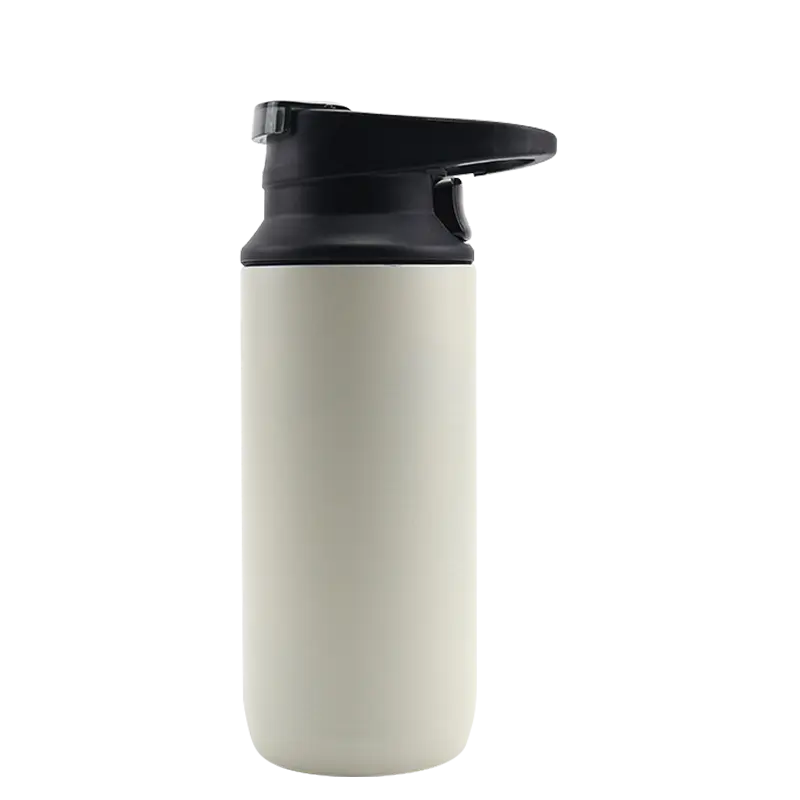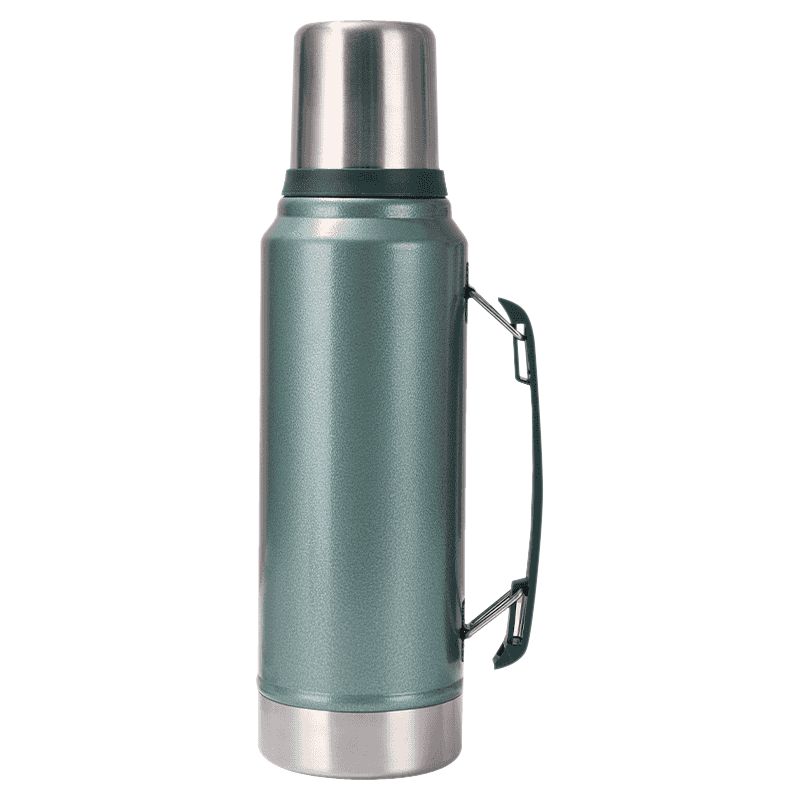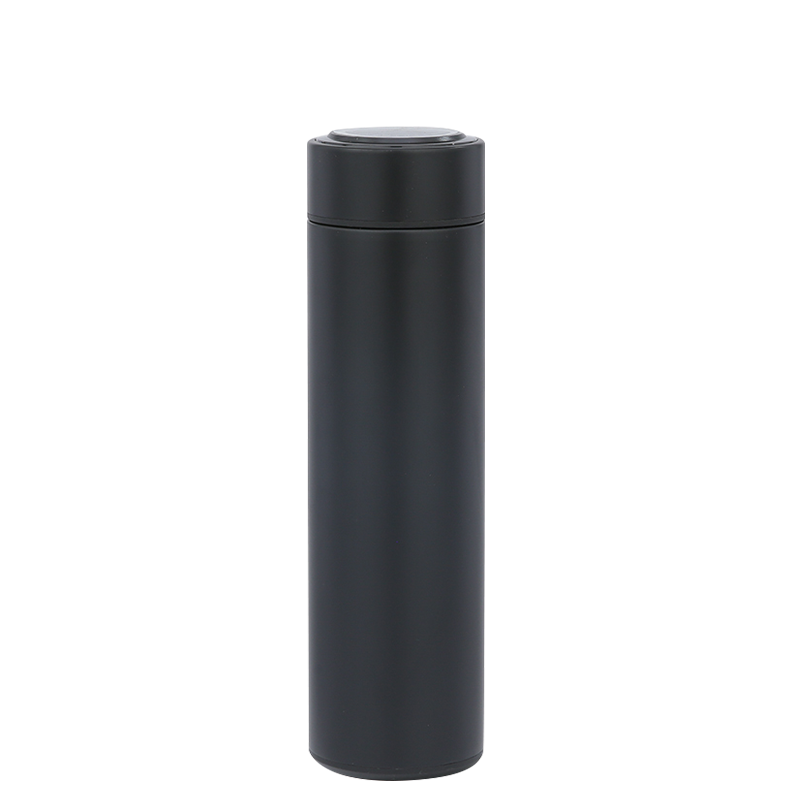
+86-13566758039

Industry News
A well-chosen sports water bottle is a practical companion for daily movement and planned training alike. More than a container, a bottle designed with the right material, cap style, and capacity supports steady hydration, simplifies on-the-go sipping, and reduces reliance on single-use plastic.
A sports water bottle solves everyday needs active people often take for granted. More than a drink container, a thoughtfully designed bottle supports comfort, consistency, and convenience across daily routines. Below are the key reasons:
During training, commuting, or outdoor hobbies, a dedicated bottle encourages frequent, small sips. Regular fluid intake helps sustain focus and steady energy, making long sessions feel smoother. One-handed grips and easy-open lids allow drinking without breaking rhythm.
Refill stations in public spaces make reusable bottles practical. Choosing a refillable sports bottle cuts single-use waste and saves money while fitting easily into backpacks, cup holders, or gym bags.
Spill-resistant shapes and quick-access lids — flip caps, straw tops, or lockable spouts — enable safe drinking while walking, cycling, or juggling gear. Those design choices make hydration feel natural rather than disruptive.
Materials such as stainless steel, high-grade polymers, or glass inserts prevent lingering odors and help maintain a drink's original taste. This is especially useful for flavored water, tea, electrolyte mixes, or chilled beverages.
Some bottles offer insulation to slow temperature change; others prioritize low weight for travel. A versatile bottle performs well at a desk, in a gym, on hiking trails, and during everyday commutes.
Carrying the same bottle daily builds muscle memory for opening, handling, and packing. That familiarity speeds routines and removes small frictions that add up across a busy day.
Choices in color, finish, and form let individuals express preferences while supporting specific activities. For teams, workplaces, or events, customized bottles help reinforce group identity.
A bottle kept within reach becomes a visual reminder to drink. Over time, that cue shifts hydration from a deliberate task into an automatic part of the day.
Hydration influences how muscles recover, how focus holds up during long days, and how outdoor routines feel under changing weather. Coaches and health professionals recommend steady sipping rather than waiting until thirst arrives, and a convenient container helps people follow that habit.
A practical way to approach daily hydration is to let your thirst be a natural guide; signs like a dry mouth or slight tiredness can indicate it's time to drink. Keeping a water bottle nearby allows for regular sipping, which often works better than waiting until you feel very thirsty. It helps to increase your water intake when you're more active—such as during exercise, brisk walking, or household tasks—or in warmer settings, both outdoors and indoors. Choosing drinks you enjoy, like fruit-infused water or herbal tea, can support consistent hydration. During long periods of screen use, talking, or travel, having water visible and accessible encourages helpful sips. While many foods contain moisture, it's useful to keep a bottle on hand for regular drinking. Listening to your body for subtle cues, such as feeling sluggish or having difficulty concentrating, can remind you to drink a little more. A gentle approach of sipping steadily throughout the day often supports comfort and hydration more effectively than drinking a large amount at one time.
Choosing a fitting sports water bottle depends on how and where that bottle will be used, what materials and design features the user prefers, and how easy it is to maintain over time. The right bottle feels natural, performs reliably, and meets real-world needs. Here are key aspects to keep in mind — and how to weigh them.
Think about daily rhythm and likely use scenarios. A bottle that feels comfortable when walking, commuting, or gym-ing will end up used far more than one bought for occasional use.
The material that contacts the drink should be safe, neutral in taste, and easy to clean. Some common options:
Also check finishing details: smooth inner surfaces, no rough edges, and secure joints. For insulated bottles, ensure the double-wall or vacuum seal is properly sealed and tested.
How the bottle opens and seals deeply affects convenience and reliability. Ask these questions:
For heavy daily use, a good cap design can greatly reduce accidental spills, leaks, and customer dissatisfaction.
Frequent cleaning is vital to avoid odors, bacteria, or taste changes. A few markers for maintenance-friendly bottles:
For a bottle designed for regular, long-term use — by gym users, commuters, or families — ease of maintenance is a consideration on par with its initial design.
Capacity and portability are often in tension. A large 1-liter bottle holds more water but might be bulky, heavy when full, or impractical for small bags. A compact 500 ml bottle is easy to carry but may require more frequent refilling.
Select capacity and size based on how often you refill, whether you carry the bottle by hand or inside bags, and how much water you expect to consume between refills. Weight matters especially when walking or biking.
If you expect hot days, outdoor activity or cold drinks that stay cool for hours, a double-wall insulated bottle may suit. Insulation helps maintain beverage temperature and reduces condensation on external surfaces.
If insulation isn't a priority — for quick hydration during workouts or regular refills — a lighter single-wall bottle may be more convenient.
For team orders, corporate gifts or retail buyers, customization matters:
| Use case / priority | Recommended bottle features |
|---|---|
| Daily commuting or office | Medium capacity, slim profile, leak-resistant cap, easy-clean materials |
| Gym sessions | Lightweight, wide-mouth or sport-spout, easy cleaning, moderate capacity |
| Outdoor activity / hiking / cycling | Larger capacity, lockable cap, rugged body, optional insulation |
| Frequent refilling at events or venues | Reusable bottle, refill-compatible size, durable materials, easy to sanitize |
| Bulk or corporate orders | Customizable surface, consistent finish quality, reliable sealing, clear spec sheet |
A set of low-cost, repeatable checks uncovers the common failure modes that cause returns: leaking caps, cracked bodies, worn threads, failed coatings and gaskets that lose seal. Below are straightforward procedures any manufacturer or procurement team can run without access to a lab.
1. Drop Handling
Assess how the bottle reacts to everyday impacts. Drop it from typical hand height onto a hard surface, rotating the bottle between drops. A clear pass means no cracks, major dents, or permanent cap malfunction.
2. Cap Cycle Check
Examine wear on the cap mechanism. Open and close the cap repeatedly at a steady pace until the motion feels noticeably easier. A passing result shows that the cap still seals properly and operates smoothly after many cycles.
3. Leak Under Compression
Simulate pressure inside a crowded bag. Close and invert the bottle, then gently compress it by hand or place it under a weighted soft object. A pass is indicated by the absence of visible leakage around the cap or seams.
4. Submersion Leak Test
Identify small leaks. Fill and close the bottle, submerge it in water, and squeeze lightly while watching for bubbles. No continuous bubble stream indicates a proper seal.
5. Seal Soak and Re-seal
Check the gasket's ability to return to shape. Remove the gasket and soak it in warm soapy water or plain water for a set period, then reassemble and test for leaks. A pass occurs when the gasket seals effectively without distortion or slipping.
6. Thread and Lid Engagement
Evaluate how threads handle repeated use and slight misalignment. Screw and unscrew the cap at moderate speed while intentionally applying mild misalignment. Smooth engagement and intact threads signal a successful result.
7. Abrasion and Finish Rub
Review how the exterior finish reacts to handling. Rub coated or painted areas with a soft cloth and then a slightly abrasive pad or coin under controlled pressure. A passing outcome shows no flaking, peeling, or extensive scratching that exposes the base material.
8. Bag Compression and Tilt
Reproduce daily packing stresses. Place the bottle in a bag with other items, apply seated or manual pressure for a while, then tilt the bag. A pass is confirmed when the cap stays closed, exterior deformation remains minimal, and no leakage appears.
9. Temperature Swing Surfacing
Observe reactions to temperature changes. Shift the bottle between cool and warm ambient conditions using simple room methods, then inspect and handle it. Successful performance shows no surface separation, no persistent odor increase, and smooth cap function.
10. Strap or Handle Tug
Verify the strength of accessory attachment points. Connect a strap or clip and apply a steady pull combined with a twist. A pass means the attachment remains secure without noticeable deformation of the mounting area.
These checks provide a practical overview of how a bottle behaves in real use and help confirm day-to-day reliability.

| Feature choice | Why a buyer mentions it | How the maker can show it |
|---|---|---|
| Unlined stainless steel body | Preference for neutral taste and low leaching risk | Provide material certificates and close-up photos of internal finish |
| Flip spout with lock | Quick access with low drip risk | Show seal design and supply a short demonstration video or sample |
| Wide mouth opening | Easy cleaning and ice insertion | Offer spare gasket and cleaning brush with sample packs |
| Printing on curved surface | Brand visibility for teams and giveaways | Supply mockups with multiple placement options |
| Double-wall insulation | Longer temperature retention for outdoor use | Describe insulation approach and demonstrate condensation behavior |
A reliable submersion check uses only a container of water and close observation.
If bubbles appear steadily from one area, that spot needs rework or a different gasket material.
You can reproduce common aging modes with controlled soaking and cycling.
Replacing gaskets in sample kits and offering spare parts to buyers reduces return rates and demonstrates aftersales care.
| Section | Suggested content |
|---|---|
| Material and finish | Body material, inner finish, cap materials in plain language |
| Cap type and function | Description of opening method and any lock or safety feature |
| Cleaning and care | Short instructions and parts that can be replaced |
| Customization | Methods available and typical placement areas |
| Packaging | Unit packaging options and pallet/pack suggestions |
| Pilot and MOQ notes | Pilot process and how sample approvals are handled |
1. Rinse as soon as possible
After use, give your bottle a quick rinse with clean water before any residues—such as dust, sweat, juice, or flavored drinks—dry inside. This helps prevent odors and makes deep cleaning easier later.
2. Clean thoroughly with mild soap
This approach is suitable for a range of bottle materials and contributes to the protection of gaskets and external coatings.
3. Clean caps and straws separately
Caps, straws, and gaskets tend to collect residue from your mouth and the environment. They require separate cleaning.
4. Allow all parts to air-dry fully
Before storing, make sure the bottle and its components are completely dry. Sealing a damp bottle can cause unwanted smells.
5. Use gentle cleaning agents
Strong cleaners or bleach can leave an aftertaste, especially if you often use flavored drinks or electrolyte mixes. Stick to mild soap, warm water, or a small amount of baking soda for stubborn odors.
6. Address odors with baking soda
If your bottle retains smells after outdoor use, a baking soda soak can help.
7. Avoid very hot water on coated surfaces
Some bottles have printed graphics or special coatings that may be sensitive to high heat. Warm water is generally safe for routine cleaning.
8. Keep a small brush for on-the-go cleaning
A compact, soft-bristled brush can be useful during longer trips to clean your bottle before residues set in.
Choose one with a long handle and store it in your bag.
9. Store your bottle open in a dry place
After cleaning, store the bottle with the cap loose to allow air circulation. This prevents moisture buildup and odors.
Keep it in a cool, dry location, ideally upright.
10. Check and replace gaskets as needed
Gaskets can wear out over time, especially with exposure to dust, sunlight, and temperature changes.
By following these steps, you can help keep your water bottle clean, fresh, and ready for your next adventure.
Different cap designs match different routines. A screw cap with a wide mouth is easy to fill and clean; a flip lid often suits one-handed use while running; a straw-style spout favors on-the-go sipping and offers a hands-free option for cyclists or gym machines. Ergonomics and sealing systems influence both leak behavior and user comfort.
| Cap type | Key feature | Suitable scenarios | Main reason to choose |
|---|---|---|---|
| Flip cap | Quick press-open access | Workouts, commuting, office use | Fast one-hand drinking |
| Straw cap | Sip without tilting | Desk work, cycling, driving | Comfortable, steady sipping |
| Spout cap | Controlled flow | Running, hiking, sports practice | Reduced splashing |
| Screw cap | Secure threaded seal | Camping, travel, daily bags | Simple and dependable |
| Wide-mouth cap | Large opening | Infused drinks, picnics, ice use | Easy filling and cleaning |
| Locking cap | Anti-accidental opening | Travel backpacks, school bags, rough terrain | Added security |
| Twist-to-sip cap | Twist-controlled channel | Light outdoor use, office | Adjustable flow |
| Soft-bite cap | Mouth-activated opening | Running, cycling | Quick access while moving |
| Integrated filter cap | Built-in filter | Hiking, camping, uncertain water areas | Improved taste reassurance |
| Carabiner-style cap | Clip-ready design | Climbing, hiking, travel | Hands-free carrying |
Coatings and paint adhesion are surface-level but influence perceived quality.
Good finish behavior on these checks signals better shelf life in retail and less customer disappointment.
| Persona | Typical priority | Suggested feature focus |
|---|---|---|
| Daily commuter | Convenience and leak resistance | Lockable flip cap and slim profile |
| Gym regular | Ease of cleaning | Wide mouth and dishwasher-safe parts where feasible |
| Outdoor enthusiast | Temperature retention | Double-wall insulation and rugged finish |
| Event organizer | Brand visibility and logistics | Custom printing and efficient bulk packaging |
| Corporate gifting buyer | Perceived value | Premium finish and boxed presentation |
Keeping a single bottle within reach turns hydration into an easy habit rather than an occasional chore: the right balance of capacity, seal design, and ease of cleaning makes regular sipping simple and reliable. Use the decision matrix and quick spec sheet to match options — for example, insulated stainless steel when temperature retention matters, or a lightweight Tritan bottle when low weight and transparency are priorities. Regular maintenance, routine gasket checks, and the simple leak and drop tests outlined earlier will extend service life and reduce returns or replacement cycles. When a bottle fits daily rhythm and handling, it quietly supports performance, comfort, and sustainability across every outing.
Your email address will not be published. Required fields are marked *








* Your email is safe with us, we don't spam.


Our company's products include vacuum flasks, beer mugs, coffee mugs, car tumbler, fire stove and tensile parts, etc.
Phone: +86-13566758039
Tel: +86-0579-87171178
Fax: +86-0579-87171178
E-mail: [email protected]
Add: No.29, Qiaodong Road, Qiaotouzhou Village, Longshan Town, Yongkang, Jinhua, Zhejiang, China.

 English
English 中文简体
中文简体 日本語
日本語 Français
Français Español
Español